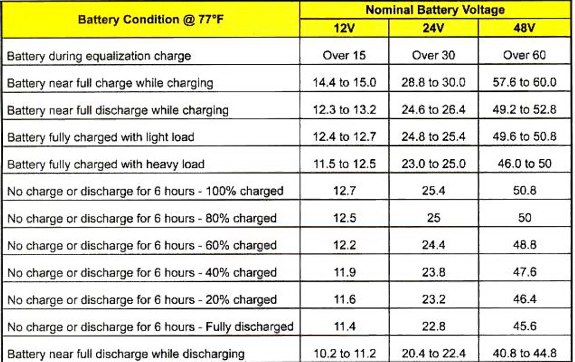
It is amazing how battery manufacturers can't agree how voltage readings and a batteries state of charge relate.
My chart says; 12.7v or higher = fully charged.
12.5v = 75% charged
12.4v = 50% charged
12.2v = 25% charged
12.0v or lower = fully discharged.
Reading should be taken after 4 hours of rest.
The o/p doesn't give us any info on his battery's capacity, make or age.
A fully charged battery reading doesn't actually tell o/p much about the remaining capacity of his battery. A fully charged 110 amph leisure battery could well-read 12.7v or higher, but might only have enough capacity to run his pump for a couple of hours. This reduced capacity is due to sulphation.
Spring and Varistream flow controllers are programmed to shut the controller off when the battery voltage under load reaches 10.5v. Under load, the battery is regarded as being fully discharged at 10.5v. Webasto and Eberspatcher diesel heaters also use 10.5v as the cut-off point.
If Col Googles NCC Verified Battery Scheme he will see some battery manufacturers who have contributed statistics to their battery's longevity in charge cycles to a 50% Depth of Discharge (DOD). It's not only recommended that our batteries are recharged as soon as possible after they have been used, we also don't use more than 50% of the batteries stated capacity. So my 105amp leisure battery only has a useable power supply of 52 amps.
Only recharging a battery when it's low on charge will reduce is capacity and battery longevity.